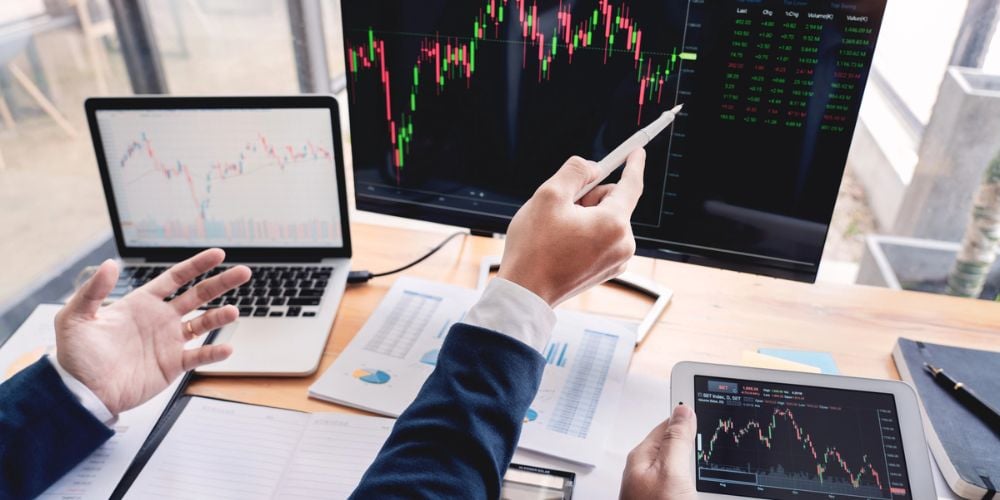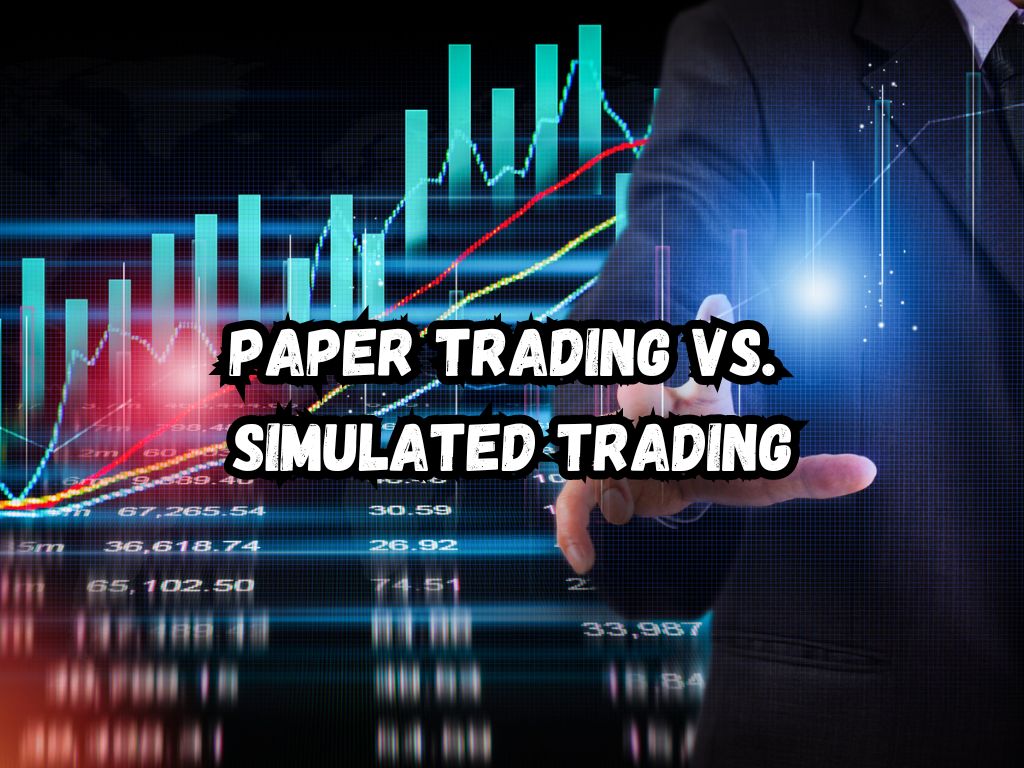Venturing into the world of trading can be a daunting experience, especially for newcomers. You must grasp various concepts and strategies, among which the choice between paper trading and simulated trading stands out.
It is crucial to understand these practices as they offer invaluable learning experiences without the financial risks associated with actual trading. Let’s compare paper trading vs simulated trading.
What is Paper Trading?
Paper trading is a beginner-friendly method where aspiring traders practice buying and selling securities without real money.
Historically, this term came from the practice of jotting down buy and sell orders on paper and tracking market movements.
Today, it involves using spreadsheet software or specialized platforms that simulate trading but with no real-time data or financial implications.

What is Simulated Trading?
In contrast, simulated trading uses sophisticated software to mimic real-time market conditions, offering a more intense experience. This type conducts transactions with virtual money in an environment that emulates current market conditions.
It often includes access to real market data, charting, and analytical tools, providing a layer of realism that paper trading lacks.
Benefits of Paper Trading
One of the primary benefits of paper bout trading is its absolute risk-free nature. You can experiment with different trading strategies without the fear of losing real money.
It also provides practical experience with market mechanics, such as understanding how to place orders or read market charts, which is invaluable for beginners.
Benefits of Simulated Trading
Simulated trading, with its real-time data flows, offers a more immersive experience. Users can not only practice their trading but also learn to adapt strategies based on immediate market movements.
Additionally, the availability of advanced analytical tools within these platforms helps in making well-informed decisions based on comprehensive data analysis.
Limitations of Paper Trading
The main drawback of paper trading concerns its detachment from real-world variables like slippage (the difference in price between the expected trade execution and the area where the trade is actually executed).
Also, trading with virtual money may eliminate the emotional equity involved, which is a significant aspect when dealing with real trading scenarios.
Limitations of Simulated Trading
Despite its advantages, simulated trading may not fully replicate market liquidity or the psychological stress of real trading.
Traders might develop a false sense of security and overconfidence that can lead to risky decisions in real markets.
Paper Trading vs Simulated Trading: Side-by-Side Comparison
In comparing both methods, paper trading is more accessible as it simply requires a pen, paper, or basic spreadsheet software. Simulated trading, by contrast, provides a more authentic experience due to the real-time data and simulation of actual market conditions.
However, simulated platforms might require subscriptions or more sophisticated equipment.
Making the Choice: Which is Right for You?
Choosing between paper and simulated trading often depends on individual needs and experience levels. Beginners may find paper trading a safe start to understand market basics while more experienced traders might prefer simulated trading to refine their strategies under market conditions without financial risk.
How to Get Started with Both Methods
To start paper trading, begin with setting up a spreadsheet to track imaginary trades or use online platforms offering paper trading options.
For simulated trading, choose a platform that offers real-time data and tools for comprehensive market analysis. Many brokers provide demo accounts where these can be tested.

Best Practices for Successful Trading Simulation
Maintain a trade journal to document strategies, successes, and failures. Setting realistic goals and limits for each session can also guide learning and performance without overwhelming the trader.
Continuous evaluation is essential whether one uses paper or simulated trading.
Advanced Tips for Maximizing the Benefit of Paper and Simulated Trading
Explore and evaluate various market analysis tools available on different platforms. Engage with a community of traders to exchange insights or consider finding a mentor who can provide direct feedback and guidance.
Frequently Asked Questions
What is the most realistic trading simulator?
The most realistic trading simulator available is typically considered to be “NinjaTrader,” which offers advanced features and real-time analysis.
Can you make money from paper trading?
No, you cannot make real money from paper trading, as it involves virtual funds and is used for practice only.
How long should you paper trade before going live?
You should paper trade until you feel confident in your trading decisions and strategies, typically for several months.
Are paper trading results realistic?
Paper trading results are not entirely realistic as they do not account for market conditions such as slippage and liquidity.
What limitations should I be aware of with simulated trading platforms?
Be aware that simulated trading platforms may not exactly replicate live trading environments, often lacking factors like emotional stress and actual financial risk management.
This comprehensive discussion not only illuminates the pathways of trading simulation but also guides traders toward making informed choices suitable to their individual trading profiles and goals.
Conclusion
Both paper and simulated trading serve as valuable educational tools for individuals looking to enter or understand the trading market better.
By using these methods, traders can gain necessary experience and confidence without the inherent risks of actual trading.


 Tags:
Tags:










